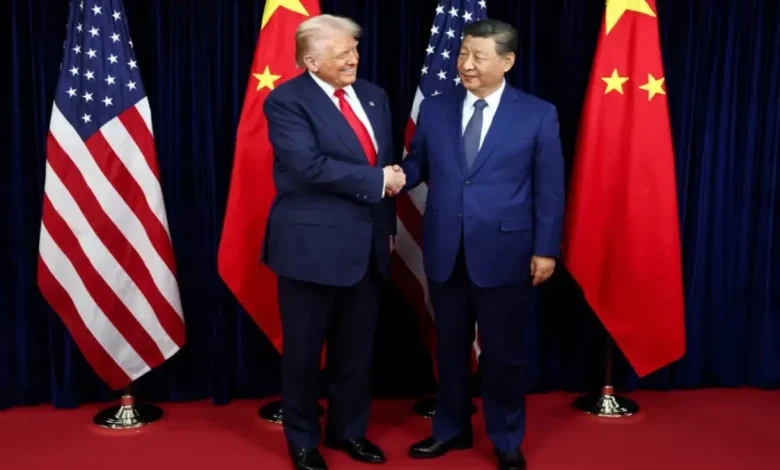How China’s New Rare Earth Curbs Put a Chokehold on US Defense Tech

China’s Ministry of Commerce (MOFCOM) is set to implement new rare earth export restrictions starting December 1, a move that American media reports suggest is strategically aimed at the US military.
Beijing is rolling out an updated “validated end-user” licensing system. This system will reportedly differentiate between civilian and military applications, fast-tracking approvals for non-military shipments while creating a mechanism to permanently deny export licenses to firms connected to the US defence sector.
According to the Wall Street Journal, this new policy could effectively block the flow of essential rare earth magnets and materials required for advanced American aerospace systems and weaponry.
A Strategy Built on Dominance
The move leverages China’s unparalleled position in the global market. Beijing currently controls nearly 85% of the world’s rare earth element (REE) mining and a staggering 95% of REE processing.
These new rules are an escalation of restrictions that began in April following new tariffs imposed by US President Donald Trump. The initial controls prohibited exports of seven heavy REEs crucial for defence technologies, including American missile guidance systems and fighter jets.
The Defence Sector in the Crosshairs
The elements first targeted samarium, gadolinium, terbium, dysprosium, lutetium, scandium, and yttrium are now subject to a licensing system where military-related applications face outright rejection.
This policy has already had tangible effects. Sixteen major US defence contractors, including household names like Lockheed Martin and Raytheon, have been added to China’s export control list. This has disrupted critical supply chains and caused delays in the production of US missiles and aircraft.
While a truce in the trade war, which followed talks between Trump and Chinese President Xi Jinping, reopened the taps for civilian REE exports, the prohibitions targeting the defence sector remained firmly in place.
In October, MOFCOM expanded its control list to include five more elements holmium, erbium, thulium, europium, and ytterbium. The restrictions were also widened to cover REE-based magnets, processing technologies, and lithium battery materials that contain any Chinese rare earths.
‘National Security’ and Market Confusion
Beijing has framed these export controls as a national security action consistent with WTO rules, though they are widely seen as a tool of negotiation.
China has stated it will screen buyers to prevent the indirect re-export of these elements to banned entities through third-party countries. Violations of this dual-use control list carry steep penalties, including fines up to $700,000 or even a permanent export ban.
The situation has been marked by conflicting reports. While some American statements suggested a broad relaxation of the rules, official Chinese readouts later confirmed that exemptions were granted only for non-military use.
America’s Critical Dependency Exposed
The effectiveness of China’s strategy lies in America’s deep dependency. The US currently imports nearly three-quarters of its REEs from China and possesses minimal domestic capacity for separating and processing these crucial heavy elements.
Pentagon data has shown that most advanced US defence systems from the F-35 jet and Tomahawk missiles to naval sonar arrays and radar platforms rely on Chinese-processed REEs.
Current US stockpiles are estimated to cover only a few months of consumption. While new domestic mining projects are in the works, they are years away from completion. Initiatives under the Defence Production Act have reportedly yielded minimal results, projected to cover only about 10% of heavy REE requirements by 2025.
A Calculated Pressure Tactic
This is not an outright embargo. Rather, the end-user restrictions are seen as a calculated pressure tactic designed to constrain US military preparedness without completely severing broader trade ties.
The immediate consequence could be significant delays up to a year in US weapon production timelines. While recycling and sourcing from allies might offer partial mitigation, experts believe it is nearly impossible for the US to fully substitute its supply of Chinese-origin REEs.
This strategy underscores Beijing’s clear intent to wield its dominance over critical minerals as a powerful deterrent to US military actions in Asia.




